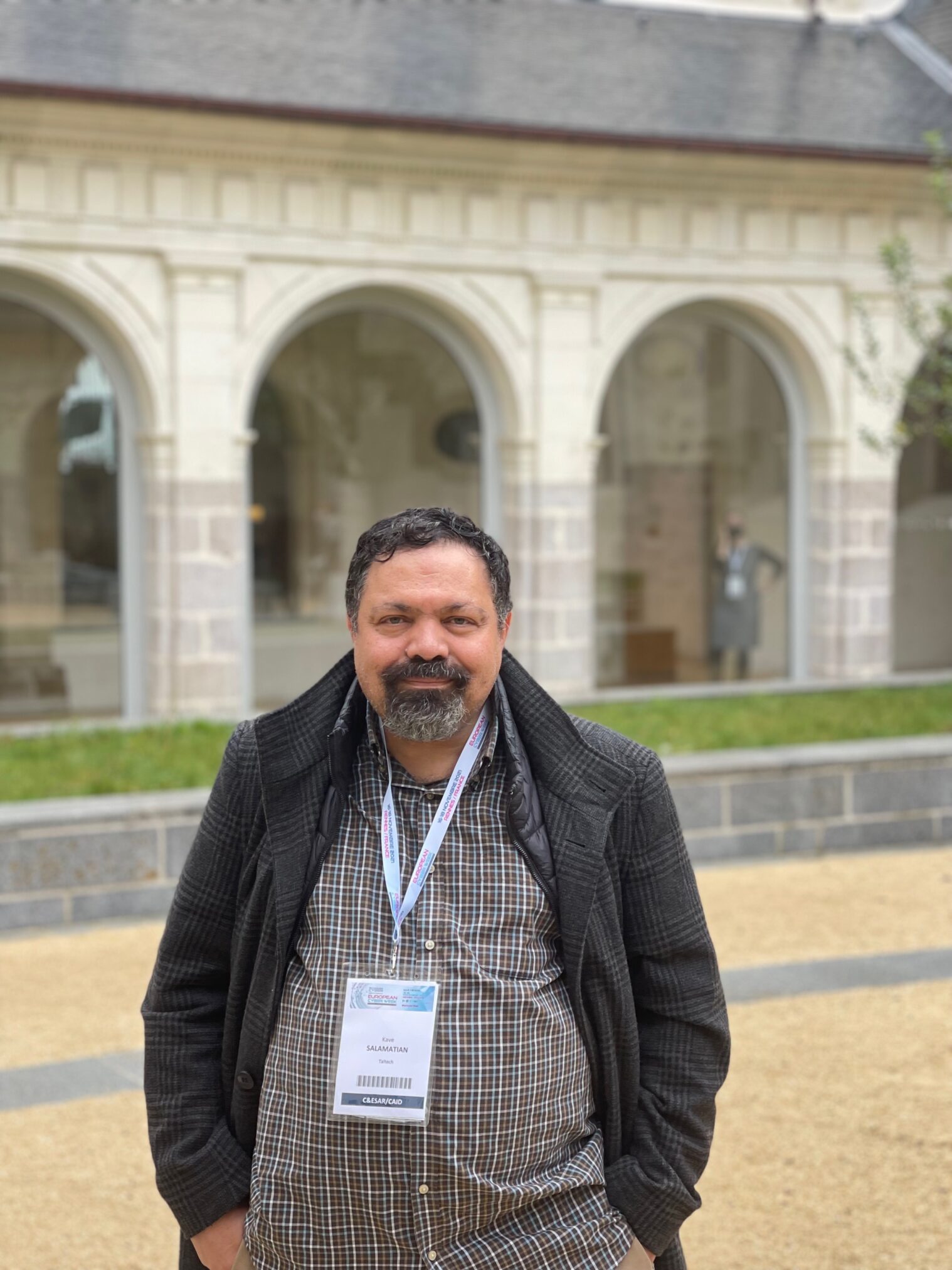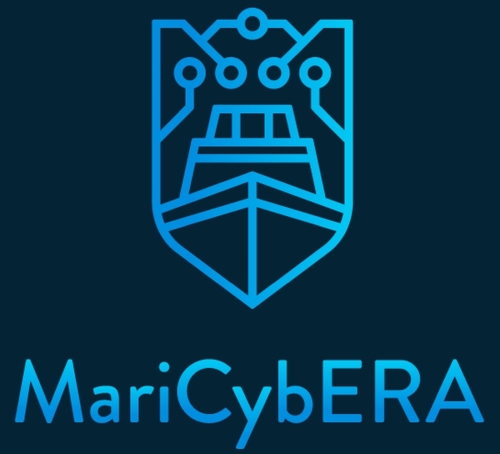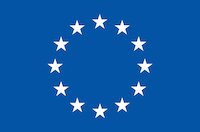ERA Chair holder 2021-2022
In October 2021, Prof. Kavé Salamatian joined TalTech as our ERA Chair holder. He has more than 25 years of research experience in different areas of computer science, particularly in Networking, Computer systems security and applying Machine Learning to these problems. He has graduated with a PhD in Computer Science in 1998 from Paris SUD-Orsay University, holds MBA in business strategy, MSc in telecommunications, a master in theoretical computer science, an engineering degree in electronics and a bachelor’s in mathematics. He is developing multidisciplinary research on cyberstrategy. He is the author of more than 150 frequently cited research articles.

Kavé is married with Venus, a Phd in biomathematics and biostatistics, and has two sons that are both doing their Phd. Beside his research activities, Kavé loves classical music, especially opera, and understanding cultures through literatures, movies and music.
The ERA Chair Holder Prof. Kavé Salamatian works closely together with the teams of School of Information Technologies and Estonian Maritime Academy to strengthen existing as well as establish new collaboration agreements with the industry. One of the key responsibilities is to establish the research strategy in the field of Maritime Cybersecurity at TalTech. This includes defining research priorities, securing research funds, establishing an international network, and creating partnerships with several types of organizations.
The first role in the project is to setup the Centre for Maritime Cyber Security at TalTech and to integrate the research capabilities from TalTech’s Estonian Maritime Academy and TalTech’s Centre for Digital Forensics and Cyber Security.
Kavé brings a brilliant expertise to develop a sustainable funding portfolio after the end of ERA Chair project, and to support the strategic goal of becoming the leading European institution in the field on maritime cybersecurity.
How do you see your leading role in the Horizon 2020 ERA Chair project?
The Horizon 2020 program defines ERA Chairs to bring outstanding academics, with proven research excellence and management skills, to universities and research institutions with potential for research excellence in Widening countries. My role is to lead the institution to the structural changes that are necessary to achieve excellence on a sustainable basis.
It means that the chair holder will have two main responsibilities: to pursue excellent research excellent research by himself by regrouping around its activities a critical mass of talented researcher to achieve major impacts, and at the same time lead structural changes in the supporting institution to ensure sustainable excellence beyond his own research.
A major challenge in front of research in general and more particularly in computer science is to recruit talented PhD student that are ready to spend 3 to 4 years to advance the frontier of our understanding in the field of their research. This search is constrained by industrial competition. In addition to excellent engineers and technicians working in industry, strategic long-term objectives of Europe and Estonia in particular needs PhD or research dedicated students that will guarantee the long-term innovation in the field and address challenges that exists.
This is a leading role of the ERA chair holder to build an incentivized environment that will position TalTech as a visible and major focus point for European and International students in cybersecurity and areas related to it to apply and come to do their research.
Do you feel that Estonia is the best place to develop research in the field of maritime cybersecurity?
Cybersecurity projects have frequently national security dimensions that cannot be dismissed. A country, like Estonia, needs also to educate enough nationals that could take positions and participate in sensitive positions and projects that have national security dimensions. Ensuring a stock of national and European cybersecurity expert in general, and specialist of maritime cybersecurity in particular, is an important topic with important security implication that needs a strategic thinking and planning. The MariCybERA chair has indeed a key role to play in this context.
It is also a question of providing incentive in the competition with industry both in Estonia, in Europe and beyond. However, the MariCybERA chair will have to engage in research about the global strategy at cyber level, what I call cyberstrategy, and about capacity building, in particular on human resource. A particular topic of reflexion is relative to the NATO Cooperative Cyber Defence Centre of Excellence (CCDCOE) in Tallinn. This is a huge opportunity for MariCybEra chair and TalTech in general.
What would be your secret weapon in attracting international cooperation partners?
My past 35 years of experience in research has proven to me that research is an international game. A significant role of the MariCybERA chair holder will be to define and to implement an international strategy to attract cooperation through high visibility and concrete actions. The aims and rationales of this strategy are multiple.
- First, Maritime cybersecurity is an international issue, and developing, and implementing solutions for it should consider international dimensions that are not restricted to geopolitical consideration but goes also deep into the technical elements.
- Second point is relative to the fact that the community of researchers that are working specifically on maritime cybersecurity is not very large, and it becomes of utmost importance that these researchers build confidence, understanding and even friendship relationships to exchange relevant information and research.
- Third point is relative to the issue of talented student recruitment. We must go where these students might be and weave with their home’s institution relationships that will mutually benefit in the long term. Fourth reason, most institutions, the MariCybERA chair included, will not be able to cover completely the large spectrum of issues.
Therefore, international cooperation is mandatory to fill the gap we might have. Anyway, I already foresee a relatively extensive list of centers that should be contacted to build a network of cooperation. Among them and putting aside the CCDCOE that is already a major partner, there is indeed European institutions like ENISA that has done a remarkable work in identifying major maritime cybersecurity areas of risk, and other European institution involved in cybersecurity related issues and dialogue. There are maritime cybersecurity institutes and chairs that are appearing in several European countries, like Finland, Norway, France, UK. But we should go beyond Europe and make connections also with Singapore, Japan, South Korea, Australia, Canada and indeed USA, that all have strong interest on the subject. I have an experience in managing scientific cooperation on cybersecurity with Japan and my past projects with South Korea, Singapore, Australia, Canada, etc., put me in a strong position to build these relationship as I already know or have worked personally with a large set of relevant people in these countries. However, this need a cyberstrategic thinking and an implementation plan that will consume a lot of energy from the MariCybERA chair holder and the whole team.
How do you feel, is this kind of multidisciplinary topic a challenge for you?
As pinpointed before, a major challenge in front the MariCybERA is the multidisciplinary nature of the topic. Indeed, Maritime cybersecurity needs interaction of a large palette of scientific actors, e.g., maritime engineers, marine fleet members, logisticians, computer security experts, but also geopoliticians, geographers, political scientist, lawyers, etc. These different scientific disciplines have each their own methodology of research, their timescales, their jargons, etc. Nonetheless, working on maritime cybersecurity will need a tight interaction and cooperation between these disciplines.
My research activity has developed during the first 10 years of my career mainly at the crossing between networking, signal processing, and applied mathematics. I was, from 2011 to 2015, in the European Internet and Networking Science (EINS) consortium that was aiming into developing theoretical foundations for Internet Science. This was a multidisciplinary effort toward developing an integrated and interdisciplinary scientific understanding of Internet networks and their co-evolution with society. The network brought together over thirty research institutions across Europe that were focusing on network engineering, computation, complexity, networking, security, mathematics, physics, sociology, game theory, economics, political sciences, humanities, and law, as well as other relevant social and life sciences. In this network, I have been the leader of the main work package about theoretical foundation of Internet Science. The experience leading a multidisciplinary group inspired me to become more active in this type of research. I began to work with geopoliticians and political scientist on geopolitical analysis of cyber-issues. I will leverage this experience and strengthen the multidisciplinary dimension of both the chair activity both more generally of TalTech, while pursuing my research activities in Computer Science dimensions of cybersecurity and in particular maritime cybersecurity.
What would be your priority research directions in the frame of MariCybERA project?
One dimension of the MariCybERA chair holder is relative to its own research and its excellence. My research direction would adapt to the existing context, regarding the « Maritime » dimension of the chair. Nevertheless, I can see 4 potential research directions:
1. Security of cyberphysical systems with emphasis on ship and harbor Security
2. Machine learning and artificial intelligence for cybersecurity
3. Large scale graph mining and analysis
4. Cartography of cyberspace and cyberstrategy will give below some details about each one of the dimensions.
What would be your best experience you take with you from the past?
I have already been heavily involved in multidisciplinary research in the past decade. The EINS European Network of Excellence provides me a strong network of collaboration in Europe and beyond for multidisciplinary interaction that I will leverage in this project. In 2014, in collaboration with Jeremy Robine, a geographer, we published a paper titled “Envisioning Cyber-geography”, where we developed a fundamental methodological approach to the cartography of cyberspace.


